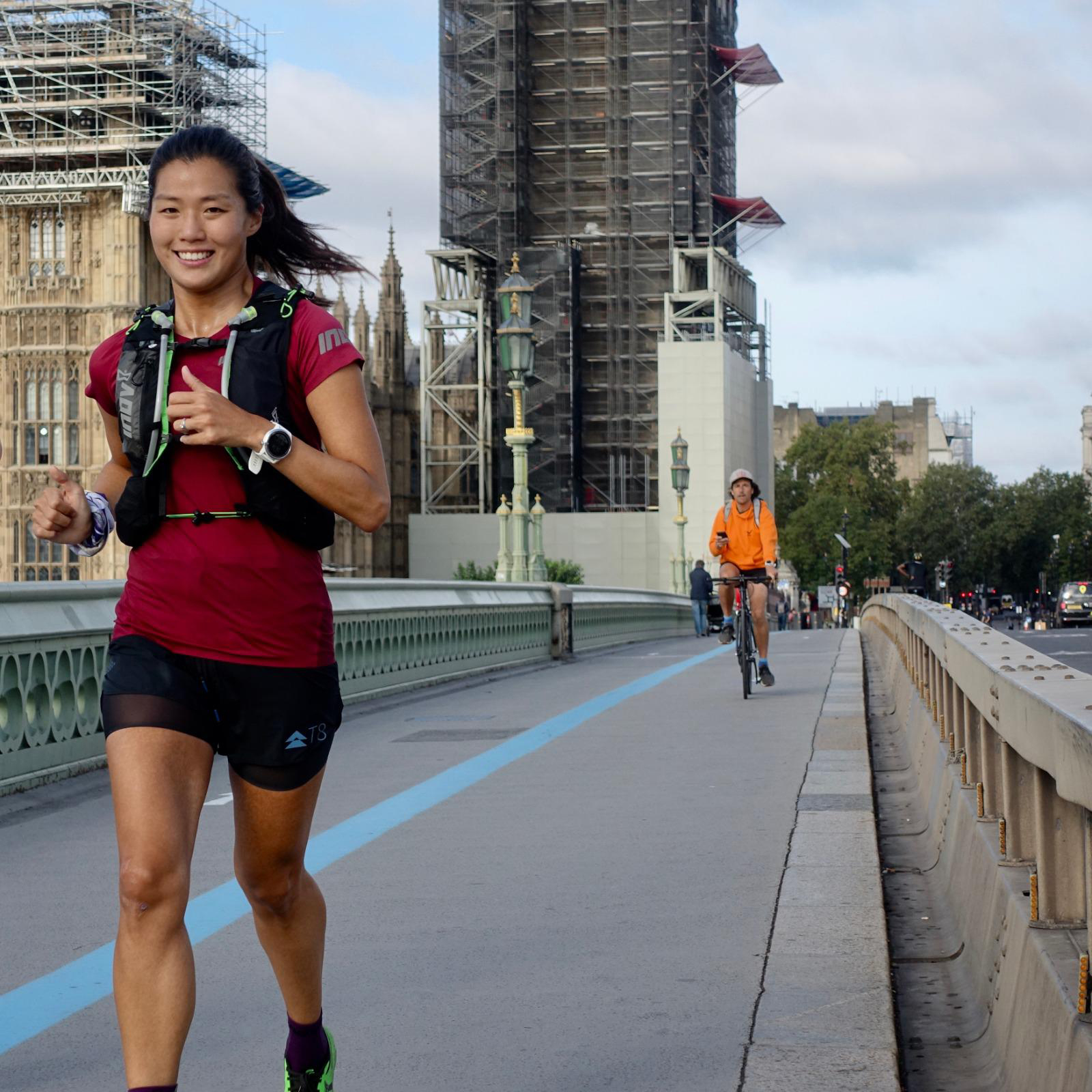City of Stars – Alison Walker and the Smog Graham Round
Posted by Ed on October 30, 2020
Ever since Bob Graham laced up his plimsolls and took to the Cumbrian fells in 1932, bagging 42 peaks in 24 hours, his name has been synonymous with British outdoors endurance. The Bob Graham Round, as it has become known, has since been completed by over 2000 runners. Just as serious amateur road runners might compare marathon times to get a sense of one another’s abilities, so fell runners compare Bob Grahams.
Similar rounds have emerged in the UK’s other mountainous regions, including the Paddy Buckley in Snowdonia, the Charlie Ramsay in Scotland, and the Dennis Rankin in the Mourne Mountains, all of which are designed to test runners to their limits whilst taking them on a whistle-stop tour of the UK’s most dramatic landscapes.

Alongside these classic tests of mountain endurance, there exists a growing catalogue of ‘alternative’ adventures. The ‘Frog Graham Round‘, for instance, combines 40 miles of fell running with open water swims across four of the Lake District’s iconic waters, whilst John Kelly’s ‘Grand Round’ – a continuous event combining the Bob Graham, Paddy Buckley, and Charlie Ramsay by cycling in between them – is so mind-bogglingly colossal that he may just be the only finisher. Ever.
But whilst these challenges differ in character, they remain a celebration of all that is remarkable about British off-road running – dark, looming peaks, unforgiving terrain, weather with a capital ‘W’. Occasionally, some bucolic vista might present itself in between half-snatched breaths, but fell running’s greatest pleasure was perhaps best expressed by Richard Askwith in Feet in the Clouds: “every now and then, it is over.”
The trouble is, for all its splendour, the Lake District is not the Britain of most Britons. Nor is Snowdonia, or even the South Downs. So many of the UK’s natural landscapes remain unexplored by huge swathes of the general public, who – to the exasperation of many an outdoors enthusiast – seem content to chuck everything from the barren emptiness of Dartmoor to the rolling fields of the White Peak into a hermetically sealed box marked ‘the countryside.’
Of course, not everyone avoids the outdoors out of laziness or ignorance. There exist psychological, social, and economic barriers holding many people back from exploring the UK’s national parks, and more must be done to open up these places for everyone to enjoy. But as a lifelong townie, I must admit that I remain skeptical that these are the only places in which the pursuit of adventure is possible.

Footpaths that slip between houses and open up onto featureless fields at the edge of town, a few blankly staring horses in one corner, backlit by the distant roar of traffic – this is the terrain I cut my running teeth on. Whilst it may not inspire awe like the fells, suburbia offers a different kind of wonder, one characterised not by extreme weather or heart stopping climbs, but by a kind of psychogeographical awareness – a sense of knowing the intricacies of one’s surroundings, the hidden histories that lie beneath the surface of a place.
So, as you can imagine, when I caught wind of a fellow London-based trail runner gearing up to attempt something truly magnificent, an adventure of such enormity that it had never before been attempted, right here in the city – I knew I had to be involved somehow.
* * *
“I long to go through the crowded streets of your mighty London, to be in the midst of the whirl and rush of humanity, to share its life, its change, its death, and all that makes it what it is.”
Bram Stoker, Dracula
The ‘Smog Graham Round’ is a ~300km (186 mile) route which snakes its way around the UK’s capital, hitting the highest ‘peak’ in each of its 32 boroughs. Many of these peaks are modest, to put it mildly – the highest point in Tower Hamlets, for instance, is an indistinct corner of suburbia, a mere 18m (60 feet) above sea level. Others are more impressive, like the 245m Westerham Heights in Bromley, the highest point in the city and the only ‘county top’ on private land, inaccessible to the public – the Round gets as close as is legally possible.
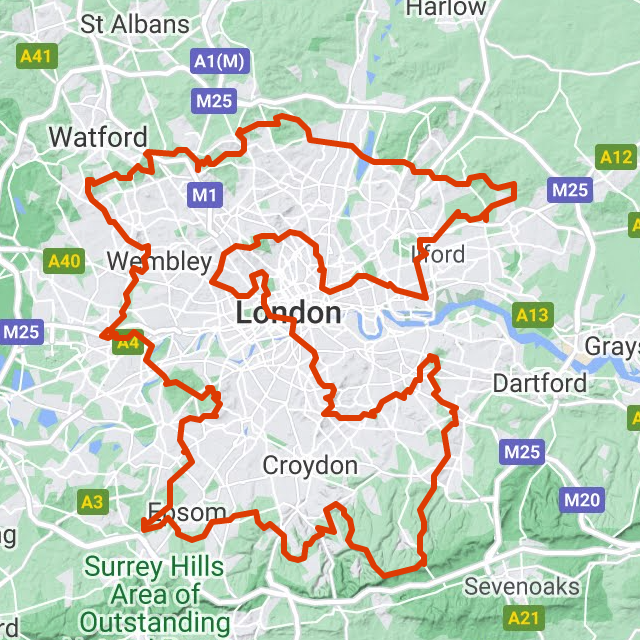
The route was first devised by Rick Pearson of Runner’s World, and back in 2018 a relay team had a crack at it. Made up of “an eclectic mix of ultrarunners, comedians, authors and magicians – all united by a love of running in the capital, and a willingness to get involved in daft, do-it-yourself adventure,” the group finished in an impressive 22 hours and 14 minutes, albeit without returning to the starting point and thus not technically completing a ’round’.
Pearson himself tried to hike the Smog in five days back in 2019, wild camping on route. “It was far, far harder than anticipated,” he writes, “partly due to having to lug camping equipment with me – and, tragically, I had to admit defeat on day three.” Since then, despite Pearson laying down the gauntlet, nobody has dared attempt a solo Smog Graham.
It’s easy enough to see why. First of all, even in the hardened ultrarunning scene, 180 miles is, for many people, uncharted territory. Unless your name is Courtney Dauwalter, the distance more or less necessitates two full days (and nights) of running, a difficult prospect to get enthusiastic about.
Secondly, there’s no getting around the fact that London is, well – London. The UK’s biggest city; a European metropolis. And that means tarmac – lots of it. Despite Pearson’s best efforts, with the help of rambler Jack Cornish, to make the Smog Graham “as green and good-looking as possible,” more than 50 percent of the route is on road, pavement, or path. It’s a testament to the hidden spots of greenery that pepper the city that this ratio is as high as it is, but nevertheless, the idea of 90+ miles of cold, hard tarmac is surely enough to make even Kipchoge weak at the knees.
And that’s not to mention the scenery, or lack thereof. Most routes involving triple-digit mileage at least grant the runner the prospect of the occasional wide-open spaces to gawp at in the midst of an hours-long slump. Not the Smog Graham. Chicken shops and bus lanes, ambulances wailing in the gloom, the rolling babble of the crowd – these are the sights and sounds of the city, interrupted only on occasion by a glimpse of distant skyscrapers, or the hush of a forgotten wood. You’d not be blamed for passing up the chance to run 180 miles through this racket.
But you’re not Alison Walker, are you?
* * *
“It is difficult to speak adequately or justly of London. It is not a pleasant place; it is not agreeable, or cheerful, or easy, or exempt from reproach. It is only magnificent.”
Henry James
The Smog Graham passes within a few miles of where I grew up in Bushey Heath. For a significant portion of its northwest corner, the route follows the LOOP, or ‘London Outer Orbital Path’, a 250km-long route that links up fields, parks, and woodland around the capital’s border. This corner of the LOOP has always had a special place in my heart, as it’s the trail I have spent more time on than perhaps any other.
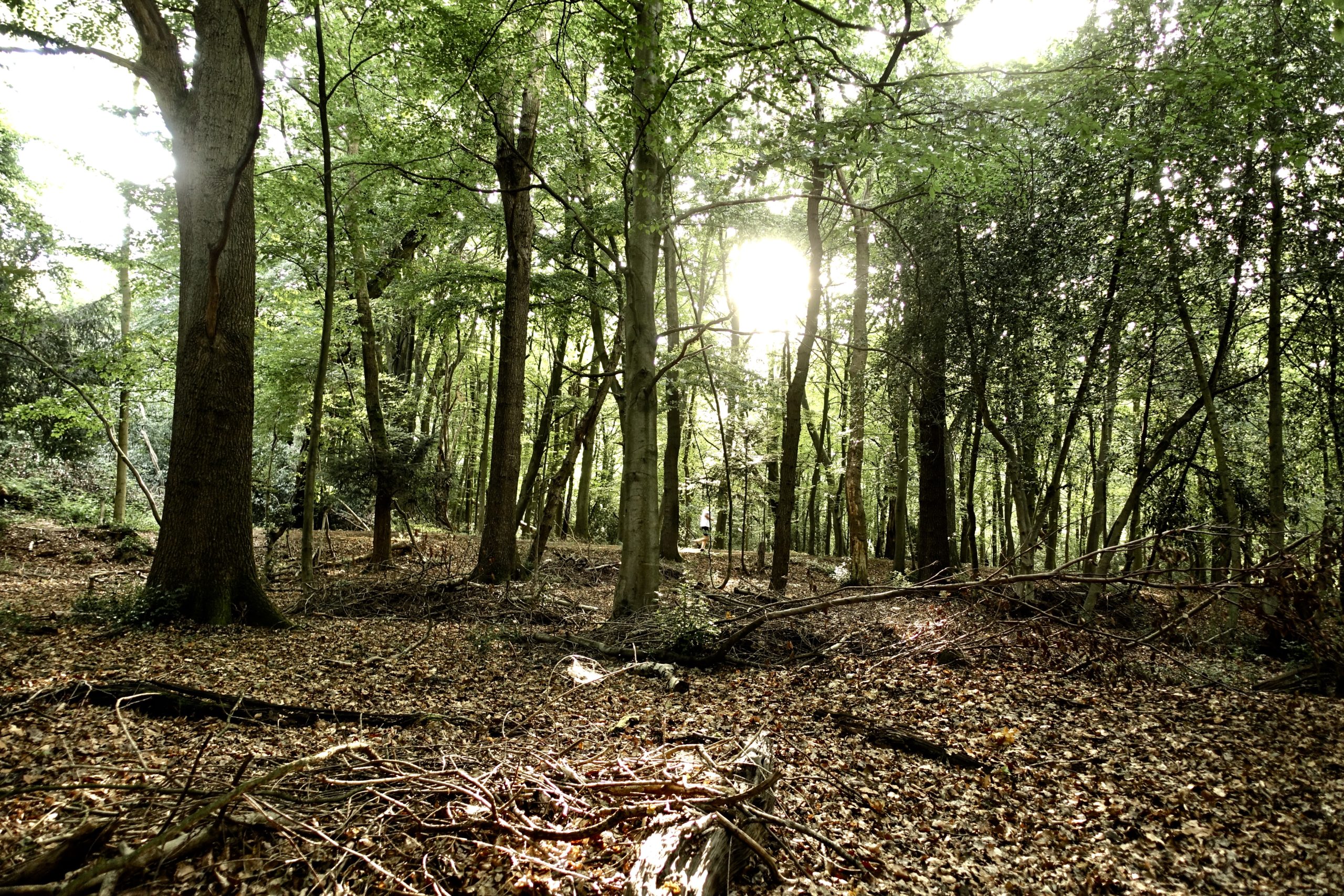
As it happens, the Smog Graham also passes through the decidedly less green neighbourhood of Camberwell, in south London, where I recently moved.
I first found out about Alison’s intentions to tackle the Smog in early September, on social media. Although I was injured at the time, I asked if I might be able to tag along for some miles through Southwark.Alison sent me a timetable of her predicted splits, which I realised I had completely misinterpreted once I poured myself a cup of coffee at 5:30 on the morning of her attempt. For some reason, I thought she’d be passing through Camberwell at around 7 – as it turned out, it was closer to 11. Not wanting to go through the hassle of waking up and getting ready all over again, I opted to head out on the Smog in reverse to intercept her.
Cycling due to the aforementioned injury, I made my way along Southbank and crossed Westminster Bridge. There is something truly magnificent about wandering through London in the early morning, especially in this strange historical moment. The streets were largely deserted, and I had to remind myself that the views I had to myself were not simulacra, but the real deal: that’s the London Eye, the Tower Bridge, the Big Ben (albeit clad in scaffolding.)
Cycling on (past the Buckingham Palace) I passed through Hyde Park, checking Alison’s tracker all the while to make sure I had my bearings correct. After reaching Marble Arch, I could see she was making her way through Regent’s Park, so I decided to stop and grab a quick coffee before intercepting her. I was already buzzing with the thrill of being ‘out there’ and on a mission in the midst of all this metropolitan grandeur.
After downing my coffee I zipped off down Edgware Road, keeping my eyes peeled for any sign of an approaching ultra runner. After five minutes, there was still no sign of Alison, so I checked the tracker again. There she was – a few hundred metres behind me, on the next street over.
Balls.
Pedalling like a man possessed I doubled back, eventually catching up with Alison and her crew in Hyde Park. She was flanked by pacer Michael on foot, and David (of DaznBone fame) on two wheels. Somewhat sheepishly I introduced myself to this all-star alliance.
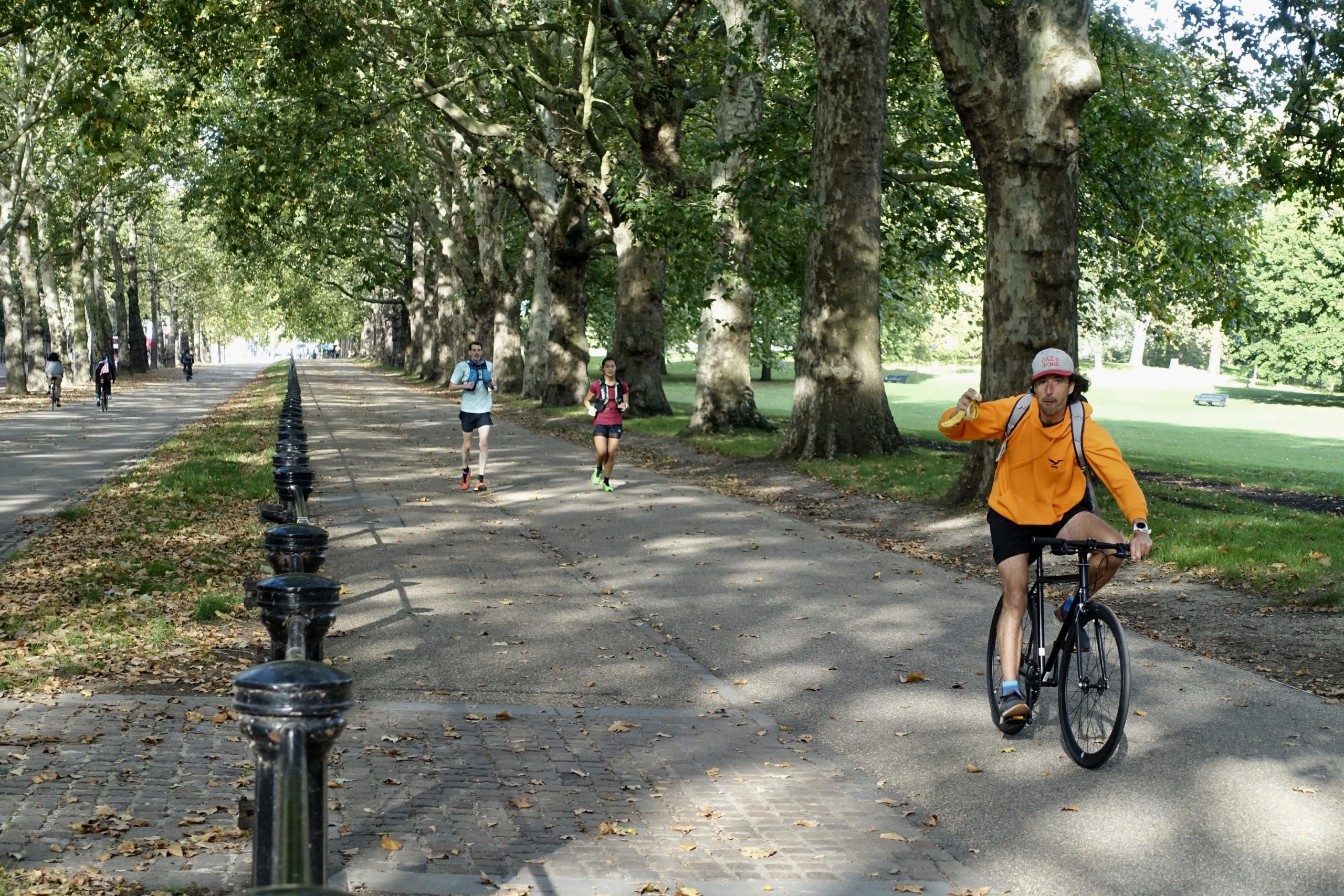
Alison herself seemed relaxed and focused – by this point she was around 20 miles in and had ticked off the ‘peaks’ of a number of central boroughs, including her home borough of Tower Hamlets.
As we rolled along, David and I rotated through the usual ultrarunning icebreakers – injuries, trail suggestions, FKTs. David is a seasoned Spartathlon competitor who earlier this year claimed the first FKT on the LOOP. Compared to his resumé, my single 50 miler and handful of 50ks seemed a mere post-it note. But he was warm and friendly, and keen to learn more about my achievements and interests. The conversation flowed as we headed south, back through Camberwell, up Denmark Hill, and into Ruskin Park.

My plan had been to support Alison for maybe an hour or so before heading home and catching a train out to Kent for a hike of my own. But as the miles rolled by, I got so caught up in the adventure that I found little reason to bail, not least because I was so enjoying exploring the area surrounding my new home. We passed through Dulwich, Forest Hill, Sydenham, and Crystal Palace, before heading eastwards through Beckenham Place Park. Having never explored south London beyond the odd trip to Brixton, time and time again I was cheered and excited by the greenery on display within the city’s parameters.
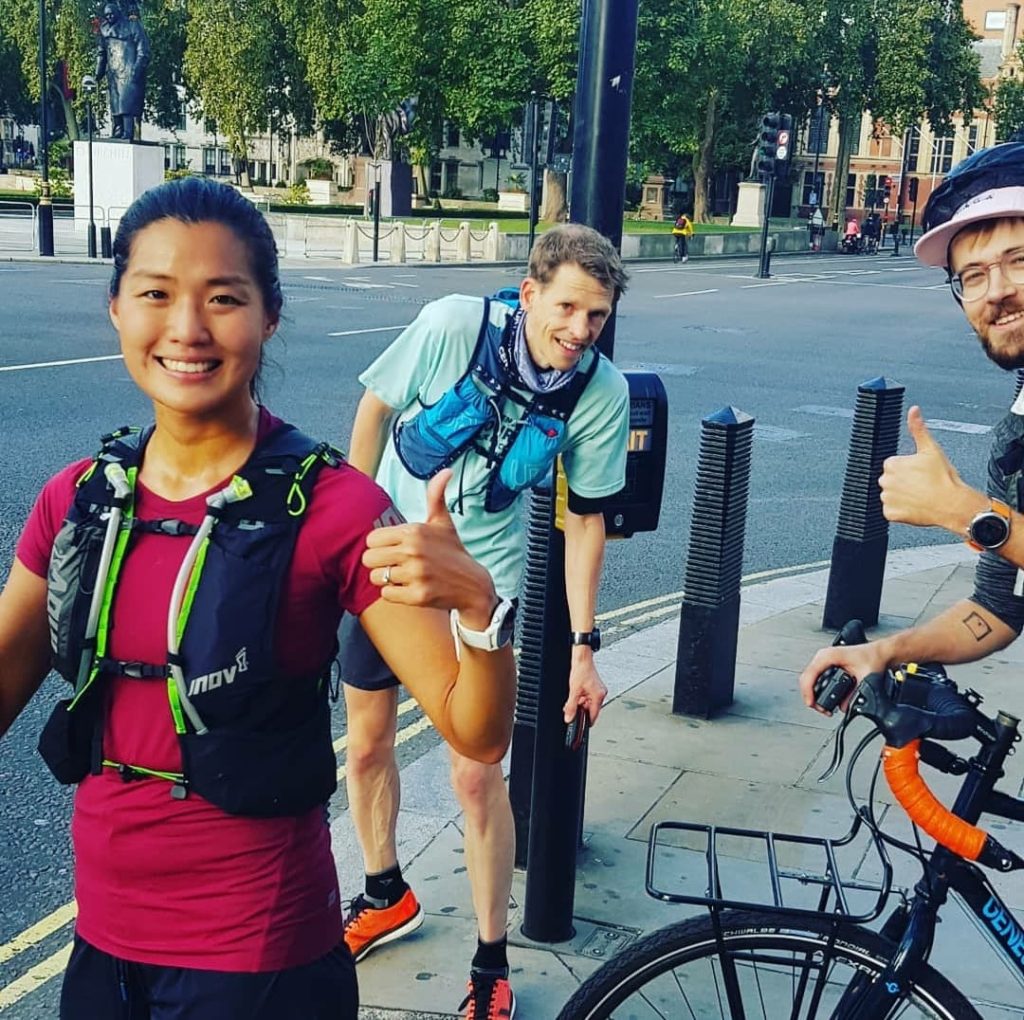
Occasionally David and I had to take a divergent path from Alison and Michael, when the route headed through certain parks or areas of woodland not accessible by bike. At one point, when David nipped into a shop to grab some water and snacks for Alison, we lost track of them completely for a few minutes. The ensuing navigational cat-and-mouse chase saw us zipping through suburbs in a bid to intercept the runners and deliver our supplies.
As Alison cruised through the 55k mark, Michael’s pacing duties came to an end, and he headed off back to his home in Streatham for a well-earned breakfast. Unfortunately, Julian, the cyclist assigned to pace Alison through the next 20 miles or so, was nowhere to be seen. Within a few short minutes, the decision was made for David to head off in search of Julian, leaving me alone pacing, and navigating for, Alison.
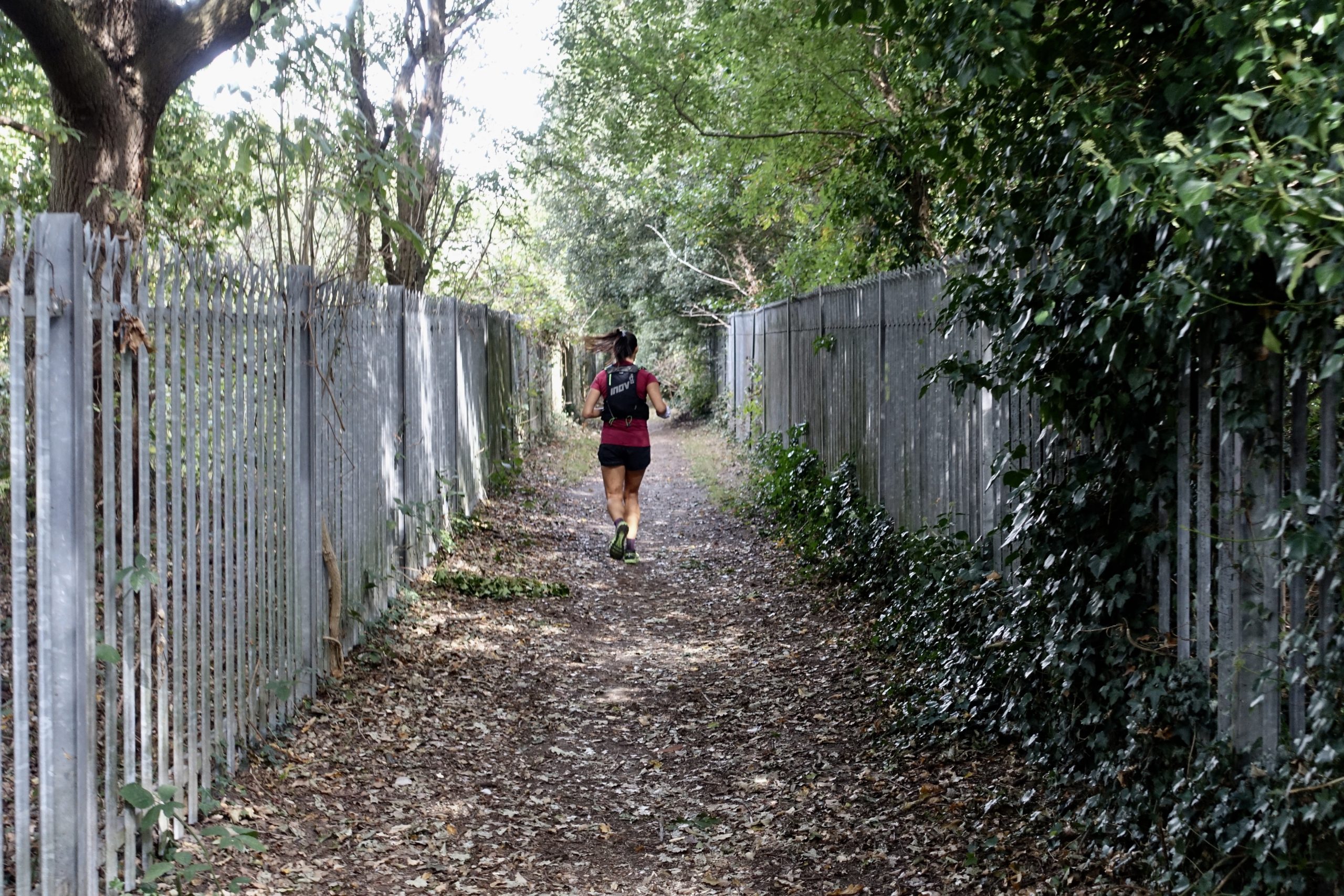
For the next fifteen minutes or so, I pedalled just ahead of, or alongside, Alison, clutching the GPS device which had the route pre-loaded onto it. In truly British fashion, we exchanged a handful of pleasantries about the weather – she had brought her effort early by two days in anticipation of a heatwave – but really we didn’t say much. I was all too aware of the fact that she was nearing 40 miles of running and still had over 140 to go. The last thing she needed was some over-excited stranger on a bike asking her whether she preferred a 4mm or 6mm drop.
Eventually, David rejoined us, now with Julian in tow. He had cycled all the way from Stratford to take over his pacing duties, and despite looking a little haggard from getting lost, he was in good spirits. A few minutes later we stopped for the first of Alison’s pre-determined ‘pit stops’ on King John’s Walk in Eltham, where we were treated to the presence of a few hungry donkeys. After downing a sandwich or two, Alison took off again, making her way along the Smog to Shooter’s Hill, the highest point in Greenwich.
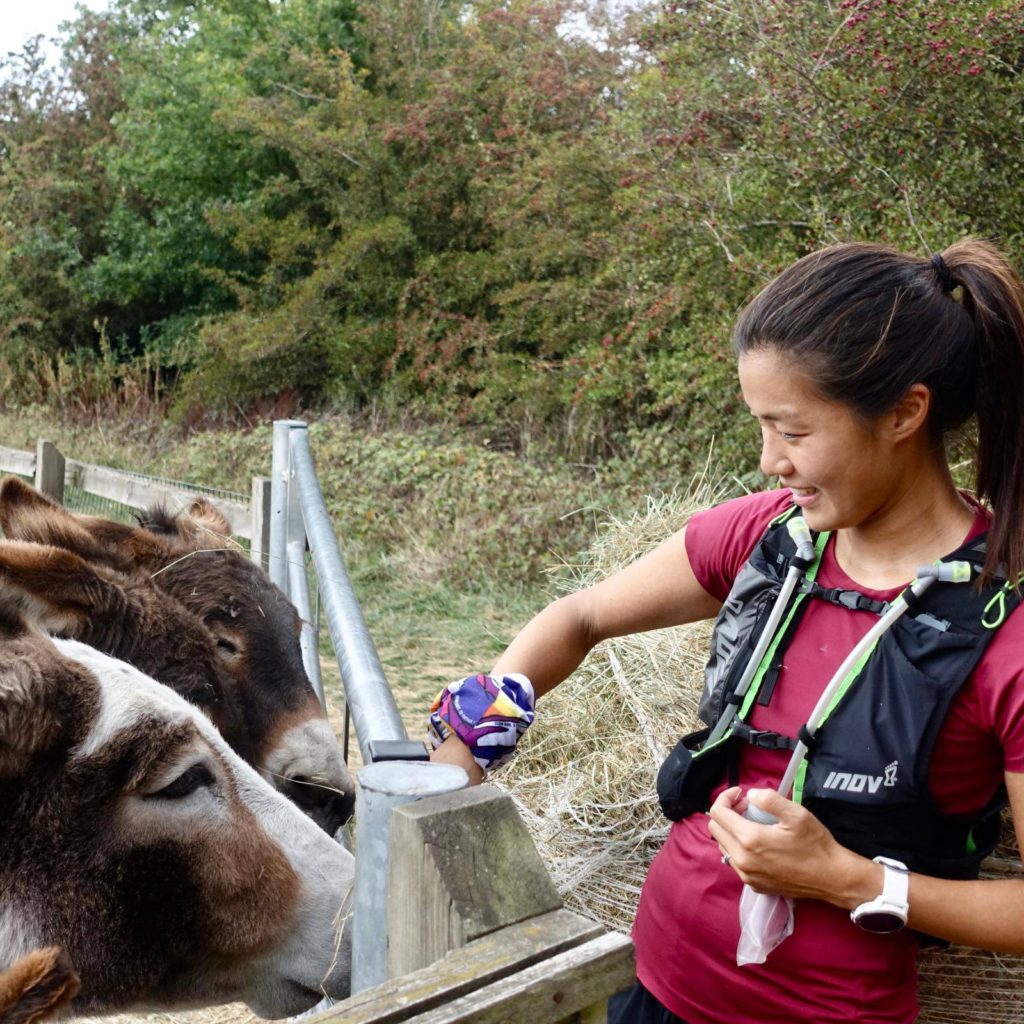
“There’s a hole in the world like a great black pit
and the vermin of the world inhabit it
and it’s filled with people who are filled with shit
and it goes by the name of London.”
Stephen Sondheim, Sweeney Todd
Soon after we made our way into Eltham proper, I bid my farewells and jumped on a train back to Denmark Hill. All weekend, I kept my eye on the WhatsApp group for Alison’s crew. Day turned into night, and then back to day again. Alison soldiered on, traversing the southern rim of the London basin along the North Downs, before trekking all the way up its western edge and through my hometown of Bushey Heath.
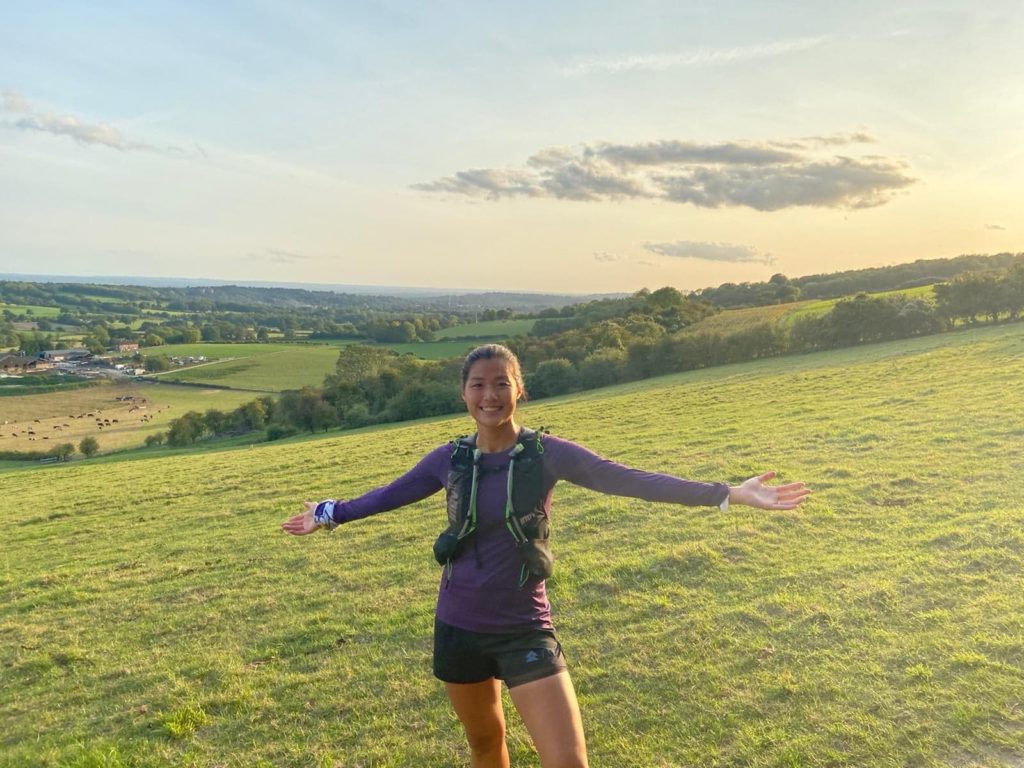
For the second time, night fell, and as I awoke on Monday morning, a full 48 hours after I had set off on my bike through the quiet London morning, news emerged that Alison was closing in on the final stretch. Pictures circulated in the group chat of a very broken looking Alison, who had been forced to don her husband’s shoes due to swelling. Someone had gone and got her a McDonald’s. This became a meme within the chat – “Potential sponsor?” someone wrote.
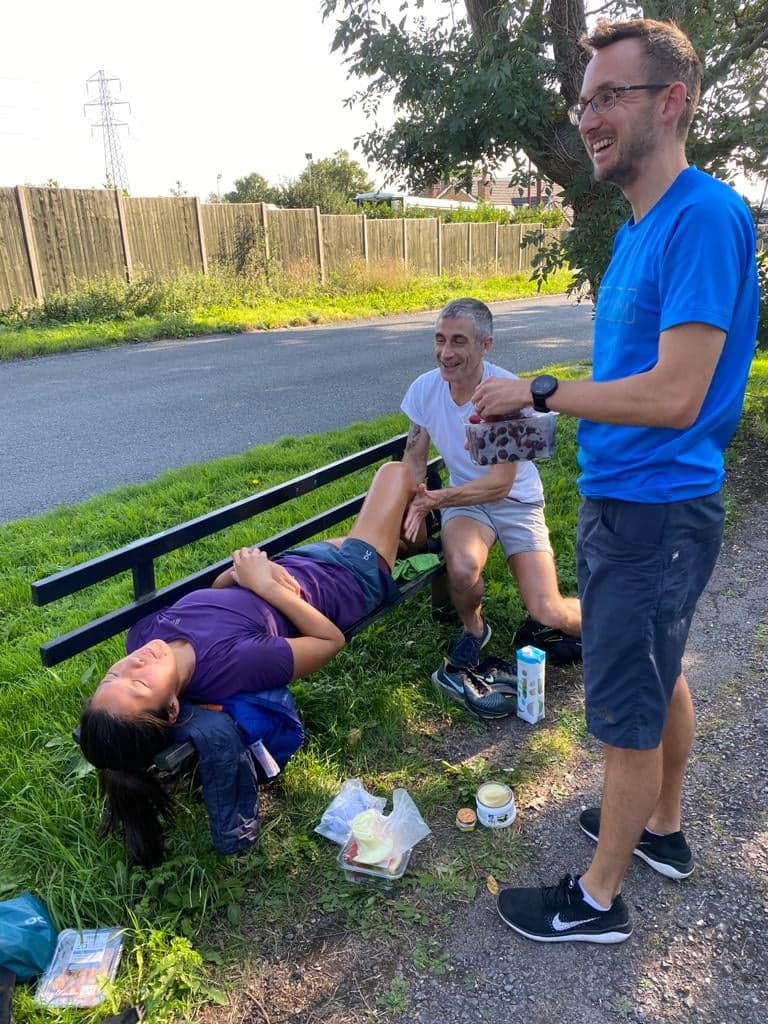
Finally, at around 10:30, 54 hours and 33 minutes after she first set off, Alison returned to her starting point to become the first ever finisher of the Smog Graham Round.
“To walk alone in London is the greatest rest.”
Virginia Woolf
All weekend, I was reminded of a similar urban adventure I had taken part in, earlier in the summer. Back in June, when the UK lockdown had become normality and virtual races were all that was available to satiate angsty runners, I took part in Centurion’s ‘One Community’ event, opting to run 50 miles over the course of a week. Meanwhile, Spencer, a Strava friend of mine from nearby Stanmore, announced his intentions to tackle the 100 mile option – in one go.
A seasoned veteran of ultras and self-confessed ‘elite jogger’, Spencer designed a route that consisted of two 50-mile out-and-backs along the LOOP from his home. Starting early one morning, Spencer first headed to Enfield before retracing his steps back to Stanmore. After a quick pit-stop in his own front drive, he ran west, then south along the Grad Union Canal, through Uxbridge, reaching the final turnaround at Hayes.
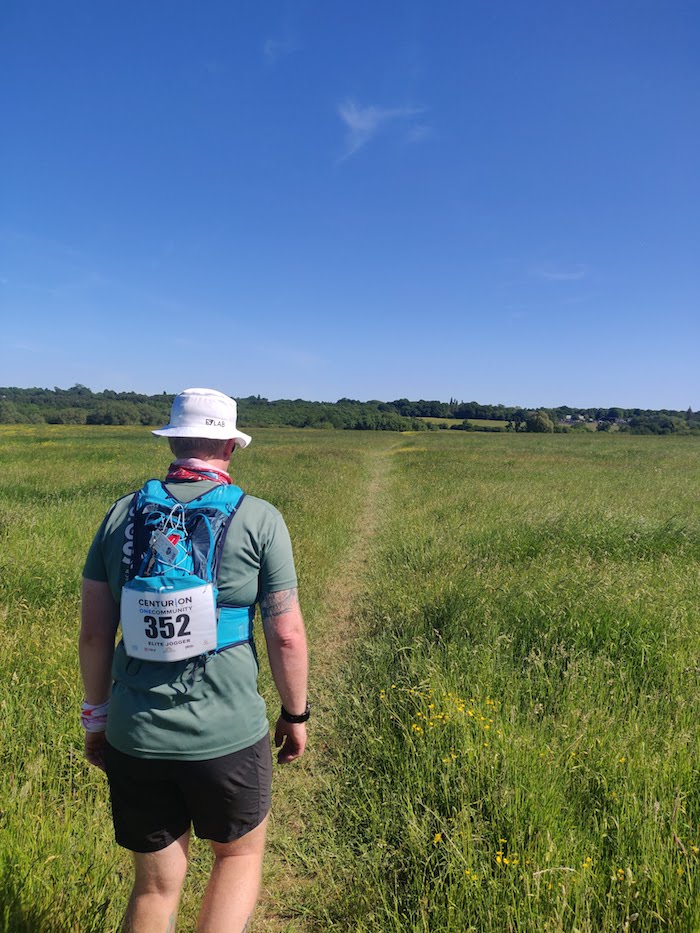
When Spencer first announced his plan on the Centurion Facebook group, I knew I had to help out. Having returned to the UK from 18 months overseas in March only to be met by an immediate lockdown with my parents, the opportunity to take part in an adventure on a route so familiar and dear to me was a chink in the clouds of a taxing few months.
I ran with Spencer for around 10 miles – miles 45 to 55 of his efforts – and was astonished and inspired by not only his physical resilience but the apparent nonchalance with which he tackled the challenge. 100 miles is, you may already know, a very long way – especially when run in solitude. Although Spencer was clearly suffering, he remained chipper and talkative throughout the few hours we ran together. Near his home, where he downed a slice of cheesecake and changed his socks with the assistance of his wife Claire, we were joined by two more runners – Sonny and Linda – and together we formed a troupe of sorts, trying to help carry some of the psychological load of the challenge.
I kept wanting to shout at passers by, out for a stroll in the late afternoon sunshine, “He’s running a hundred miles!” But I didn’t, and neither did anyone else.
As the hours passed, it dawned on me that one need not head for the hills to have an adventure – one need only stay outside long enough for that wonderful feeling of open-ended exploration to emerge.
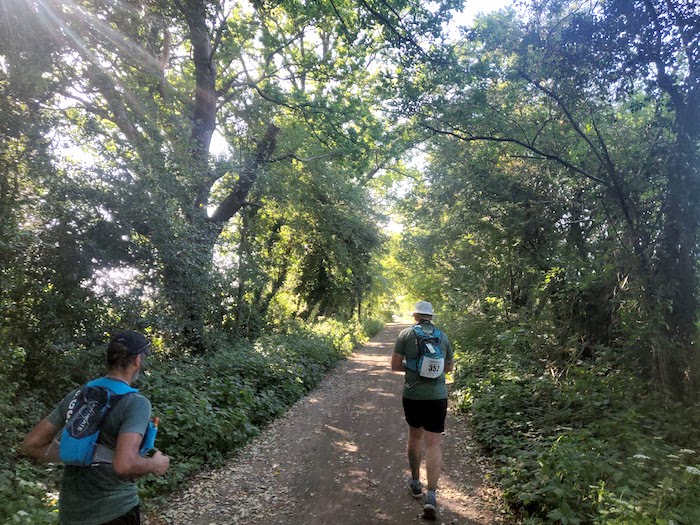
It’s a hill, get over it.
Billy Bland
There seems to exist an inverse correlation between the magnitude of the challenges an athlete has overcome and the degree to which they are liable to brag about their achievements. Were you to pass Alison, or Spencer, on the street, you’d hardly bat an eyelid. But scratch beneath the surface, and the scale of their achievements can hardly be overstated.
Perhaps this is true of everyone. Particularly in cities, and particularly in this strange historical moment, we don’t really see the people we pass on the street. We see shadows. Half-formed ‘stand-ins’ conjured by our brains, which keep track of passers-by without bothering to worry about the intricacies and nuance that lie behind their eyes.
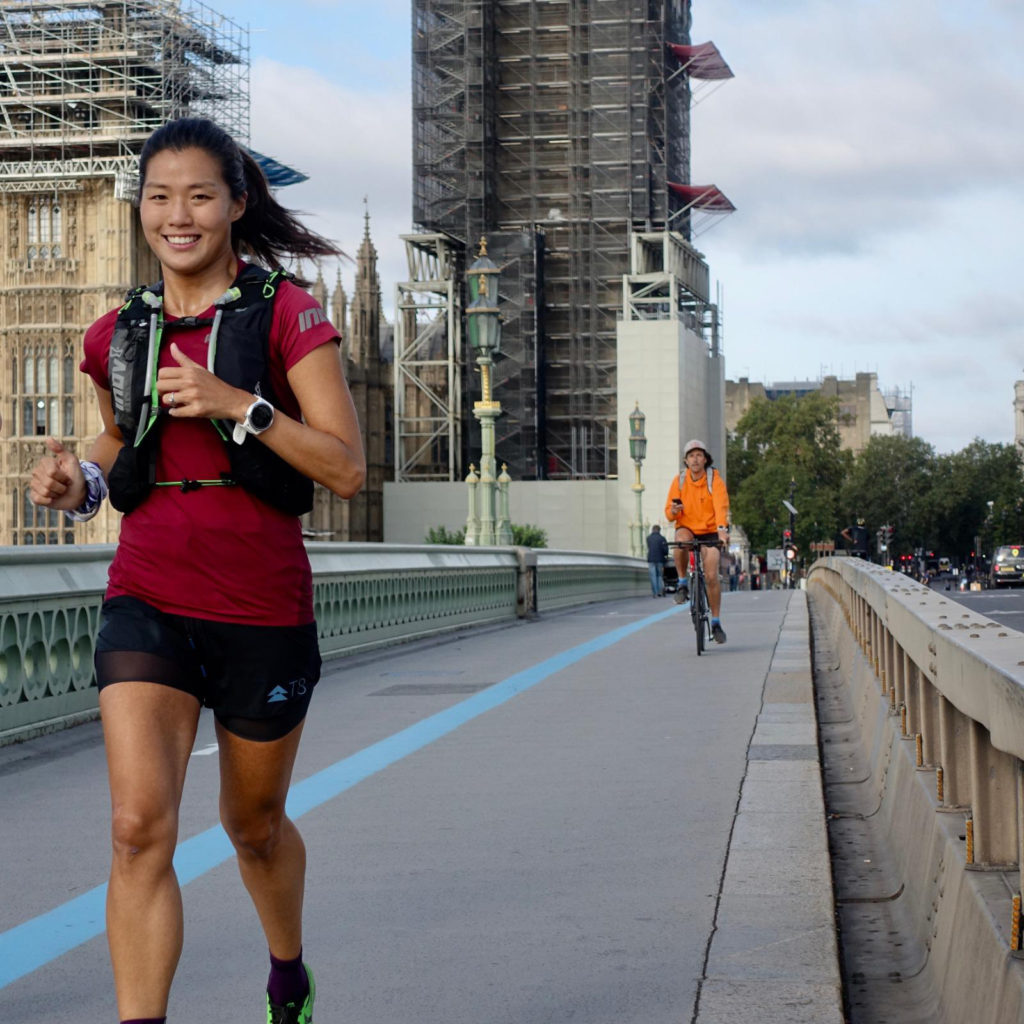
But everyone – everyone – is carrying around a chain of their own making. Everyone has done things you would not believe, for better and for worse. Everyone is imbued with so much potential it is almost impossible to comprehend, and so it must be diluted into achievements, momentary glimpses of glory.
Rolling along for a couple of hours with Alison Walker on her Smog Graham Round was one such glimpse – a parting of the clouds, the light of raw experience briefly shining through. It is not sustainable to stay in this place. It’s necessary to return to something approximating normality. But nevertheless, I look forward to returning one day soon.
